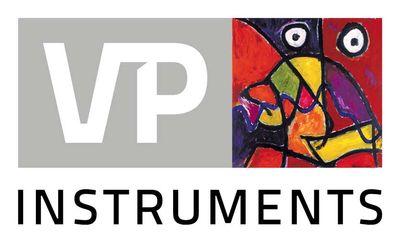

- Home
- Companies
- VPInstruments
- Articles
- The importance of recalibration
The importance of recalibration
Measuring instruments, including flow meters, should provide reliable, repeatable data especially when used:
- for mission-critical applications like energy management
- to make important decisions on the best measures to reduce energy waste
- for accounting purposes such as to get rebates from local utility companies or the government and to allocate costs.
If accurate data is so important, why do we still see so many uncalibrated flow meters in the field (i.e. meters without a valid calibration certificate)? Why do we still find metering equipment which has never been calibrated since it was first installed? Typical arguments we hear from the market are:
- “Calibration is regarded as being cumbersome”
- “Calibration is expensive”
- “Calibration is time consuming”
- “Calibration and maintenance is out of scope”
Let’s take a look at these arguments in detail to see how valid they are:
Calibration is cumbersome
Calibration can be cumbersome … Yes, it can be! This is especially true when measuring flow in large pipe sizes above 3 inches where flow meters can become large, heavy and hard to remove and re-install. In fact, it can be nearly impossible to remove them to send them back. But there is good news. You can install a lightweight, insertion type meter, which can be easily maintained. There are even measuring instruments on the market where the critical part can be exchanged on site. In other words; Choosing the right sensor technology is of utmost importance to make calibration as easy as possible.
Calibration is expensive
Indeed, there are costs involved for calibration. These are especially significant when going to a third-party lab since they often charge 500 to 1000 Euros per instrument. The costs for decommissioning and recommissioning measuring equipment, packing, shipping, handling and customs, should also be considered.
So yes, calibration costs can be experienced as expensive. Consider this though; Flow meters provide the input for your energy savings decisions, which may involve huge investments, like acquiring a new compressor or compressor control system. So, think about the consequences of buying the wrong compressor or running it with a less than optimal control system. What are the consequences of making a decision based on bad data? Not calibrating your instruments can lead to bad decisions.
We have seen uncalibrated instruments that were off by 100%. We also ran into a case where someone blamed the compressor for delivering 30% less air flow; but, after mediation by a third-party lab, the orifice flow meter tuned out to be improperly calibrated. This was for a large, > 750 kW, compressor running 24 hours a day and the cost for calibration would have been insignificant when the total cost to resolve the issues is considered. Is this not often the case; that calibration costs are not significant when looking at the total picture?
Calibration is time consuming
The old-fashioned way to do calibration is to remove your instrument and send this to a lab or supplier. The calibration period plus the time for decommissioning, shipping and recommissioning can easily be three weeks. During this period, you are without data from your instrument.
Nowadays there are manufacturers who offer sensor exchange services, which can be compared to changing the tires on a race car. After a short pit stop, you continue measuring normally. You do the exchange on-site without having to send the sensor back to a calibration lab. With an exchange, there is no waiting or wasting time. After the exchange, you simply return the sensor that was removed within a reasonable timeframe.
Calibration is out of scope
We have seen cases where an energy monitoring system has been implemented, but after the system is up and running, sensor recalibration and maintenance is not included within anyone’s budget. Some are unaware that all sensors, that are part of an Energy Management System, should be maintained regularly. For each sensor type, a calibration interval should be defined and for companies with ISO9001 certification, recalibrating sensors is mandatory. The requirement to maintain calibrated sensors also applies to companies with an ISO 50001 certified energy management system. In some cases, when energy rebates or cost allocation is involved, regular calibration is the law.
Conclusion
Most arguments not to calibrate don’t make good sense and for ISO certified facilities calibration is often required to maintain certification. So, be on the safe side and re-calibrate your instruments and sensors
